Earlier this year, the Lenovo Legion Go S, as a cost-optimized follow-up to the original Legion Go, launched. While the console had a more ergonomic design, I wasn't impressed with the system's gaming performance or its high price tag ($729 as configured).
At the time, I suggested anyone eyeing the Legion Go S hardware should hold off for the cheaper SteamOS version instead. Well, we now have a SteamOS version of the device for review, but our configuration is even more expensive than the Windows version. But as you’ll see in the benchmarks section, it's a powerhouse among the current crop of the best PC gaming handhelds.
Design of the Lenovo Legion Go S (SteamOS)
From the outside, the SteamOS version of the Legion Go S shares an identical design with the Windows 11 version. The only difference is that our previous Windows version was finished in white, while our new SteamOS review unit features a deep purplish color, which Lenovo calls Nebula.
Although it’s a personal preference, I was more drawn to Nebula. There’s also the side benefit that the darker color does a better job of masking dirt and grime than white.
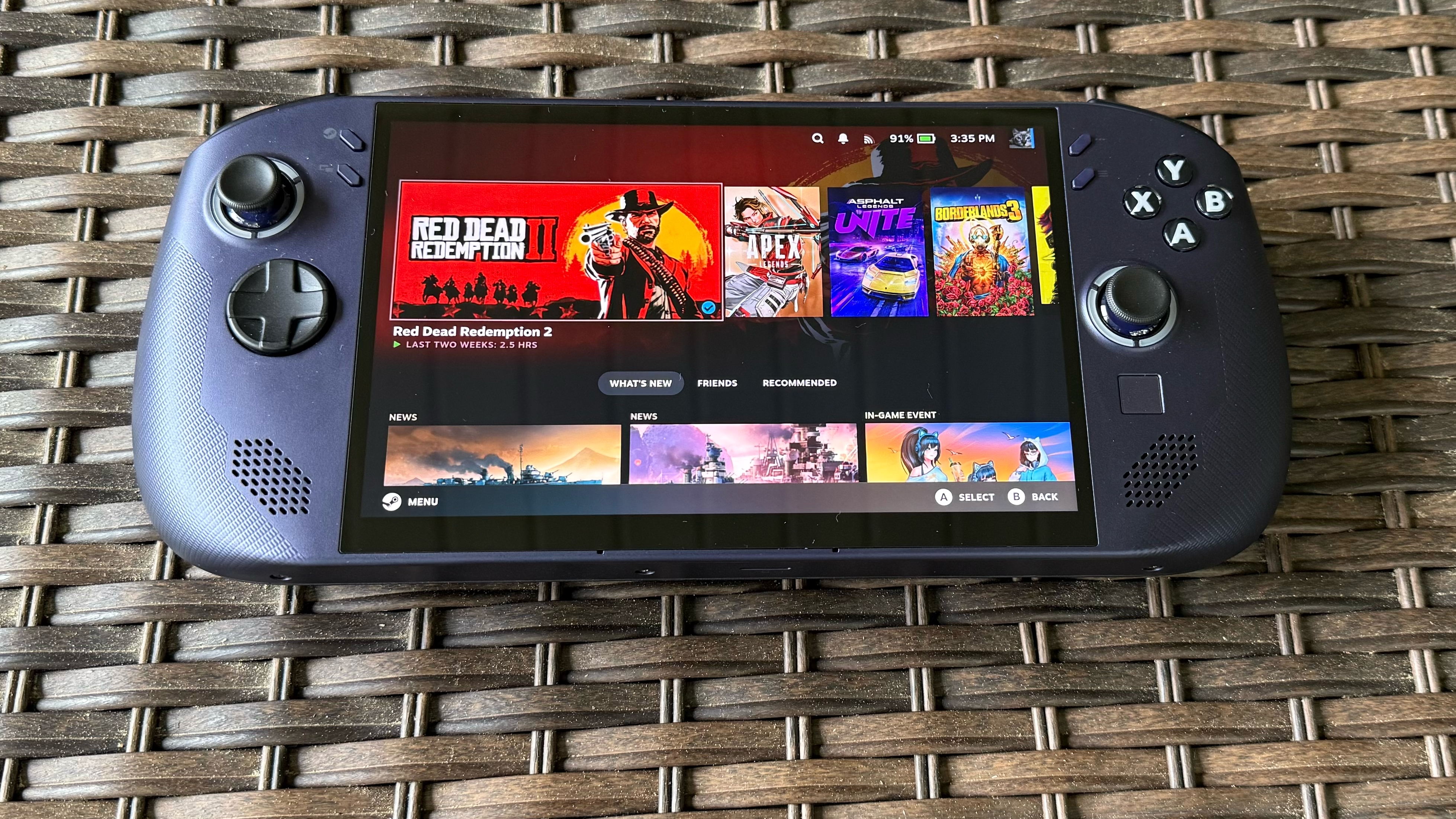
The Legion Go S's chassis is an all-plastic affair, unlike the original aluminum-clad Legion Go. I expect the chassis to withstand abuse and even a few light drops without issue, but I wasn’t brave enough to test my hypothesis with a loaned review unit.
The Legion Go S features two thumbsticks, a D-pad, and four game buttons (X, A, B, Y) on its front face and four system buttons (including a dedicated Steam button). The thumbsticks are offset, similar to what you'd find on an Xbox controller. The top of the handheld is home to two shoulder buttons and two triggers. That is also where you’ll find the power button, volume up/down buttons, a 3.5mm headphone jack, and two USB-C ports. A microSD port resides on the bottom panel. Finally, the back panel is home to two sliders to adjust the travel distance of each trigger and two additional buttons (Y2 and Y1).
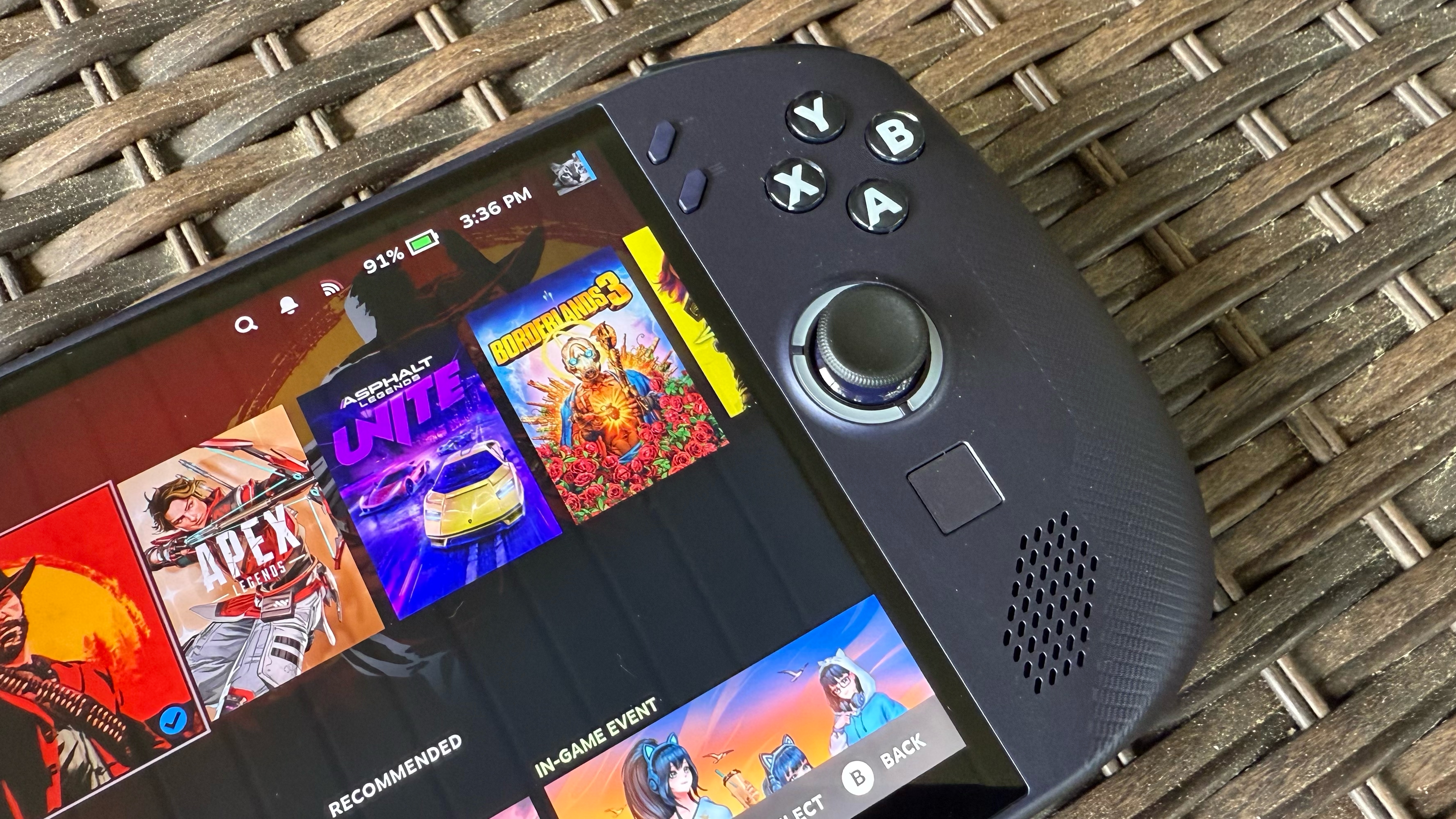
The Legion Go S measures 11.77 x 5.02 x 0.89 inches and weighs 1.61 pounds. For comparison, the original Legion Go with detachable controllers is 11.76 x 5.16 x 1.60 and weighs 1.88 pounds. The original Steam Deck is 11.73 x 4.6 x 1.93 inches and 1.47 pounds, while the Steam Deck OLED is 11.73 x 4.6 x 1.97 inches and 1.41 pounds.
Lenovo Legion Go S (SteamOS) Specifications
Swipe to scroll horizontally
CPU | AMD Ryzen Z1 Extreme (Zen 3, 8 cores / 16 threads, up to 5.1 GHz) |
Graphics | AMD Radeon 780M graphics (integrated), RDNA 3, 12 compute units |
Memory | 32GB LPDDR5X-6400MHz |
Storage | 1TB SSD M.2 2242 PCIe Gen 4 SSD |
Display | 8-inch, 1920 x 1200, IPS, touchscreen, 120 Hz |
Networking | Mediatek MT7922 Wi-Fi 6E, Bluetooth 5.3 |
Ports | 2x USB Type-C 4.0, micro SD card slot, 3.5 mm headphone jack |
Battery | 55.5 WHr |
Power Adapter | 65W |
Operating System | SteamOS |
Dimensions (WxDxH) | 11.7 x 5.02 x 0.89 inches (299 x 127.55 x 22.6 mm) |
Weight | 1.61 pounds (730 grams) |
Price (as configured) | $829.99 |
Gaming Performance on the Legion Go S (SteamOS)
Our Legion Go S (SteamOS) review unit is the flagship model, meaning that it is powered by the AMD Ryzen Z1 Extreme processor, the same chip used in the original Legion Go gaming handheld. I also have the standard, Windows-based Legion Go S on hand, equipped with the less powerful Ryzen Z2 Go. Although the processors differ, all other hardware is identical, including the 32GB LPDDR5X-6400MHz memory and the 1TB PCIe 4.0 SSD. Both systems also have an 8-inch IPS display with a native resolution of 1920 x 1200 and a refresh rate of 120 Hz.
SteamOS systems used the Performance power profile at all times, while the Legion Go S running Windows 11 used the Performance power profile on battery and the Custom (40-watt) profile when connected to AC power.
To make things interesting, I installed a fresh copy of SteamOS on the Legion Go S (Ryzen Z2 Go) to measure the performance differential between Windows 11 and SteamOS. It should come as a shock to no one that the Legion Go S (Ryzen Z1 Extreme, SteamOS) ran the table in the gaming benchmarks, and it wasn’t even close.
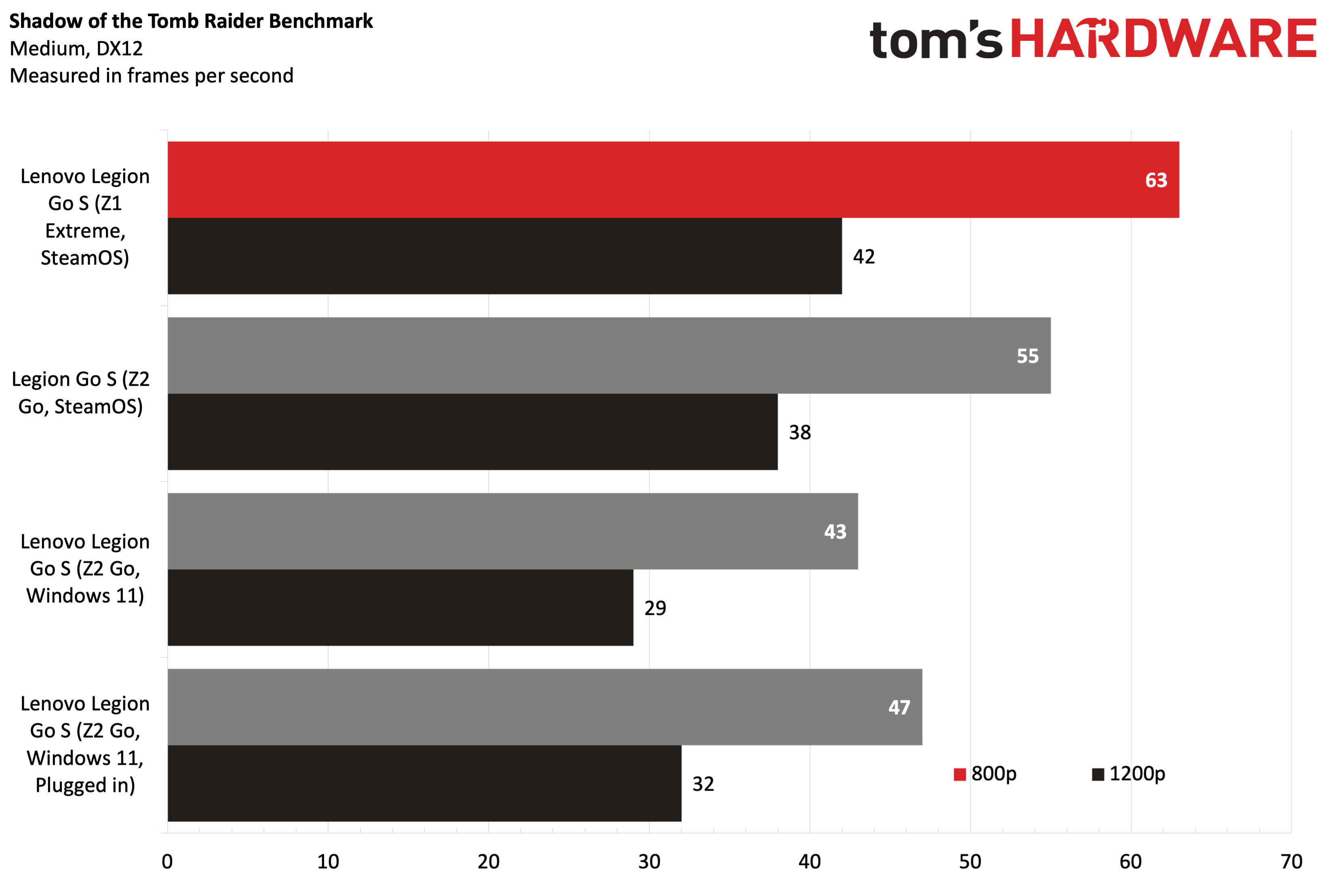
On the Shadow of the Tomb Raider benchmark (Medium settings), the Legion Go S (Ryzen Z1 Extreme, SteamOS) opened a significant lead of 8 frames per second (fps) at 800p over the less powerful Legion Go S (Ryzen Z2 Go, SteamOS). At 1200p, the lead shrank to 4 fps.
The thorough thrashing continued with Cyberpunk 2077 (Steam Deck Preset); the Z1 Extreme held an 11-fps advantage at 800p and a 5-fps advantage at 1200p. It was a similar story with Far Cry 6 (Medium settings) and Red Dead Redemption 2 (Lowest settings) – the Z1 Extreme held a 14-fps advantage in both games at 800p.
The most significant performance delta, however, was in Borderlands 3 (Medium settings). The Legion Go S with Z1 Extreme maintained an 18-fps advantage over the second-place competitor at 800p.
While the Legion Go S (Z1 Extreme, SteamOS) was the obvious star of the benchmark extravaganza, the co-star was no doubt the battle brewing between the Legion Go S with the Z2 Go running on Windows 11 versus SteamOS. There’s no question that SteamOS is a more lightweight operating system with fewer unnecessary processes running in the background to rob CPU cycles and RAM.
The SteamOS version of the system consistently outperformed its Windows 11 counterpart, and most of the time, the difference was substantial. The margin of victory was anywhere from 4 to 15 fps, depending on resolution. What makes the performance advantage even more notable is that the Legion Go S, running SteamOS, achieved equal performance on battery and AC power, and still dominated the Windows 11 version, which was running a maxed-out power profile (40 watts on AC power).
SteamOS on the Legion Go S (SteamOS)
We've already discussed the obvious performance advantages of running SteamOS versus Windows 11, but there's also another benefit: the user interface. There's no getting around the fact that Windows 11 was designed first and foremost as a desktop operating system. While you can run Windows 11 on a portable device with an 8-inch screen, various UI touchpoints can be hard to navigate with your finger.
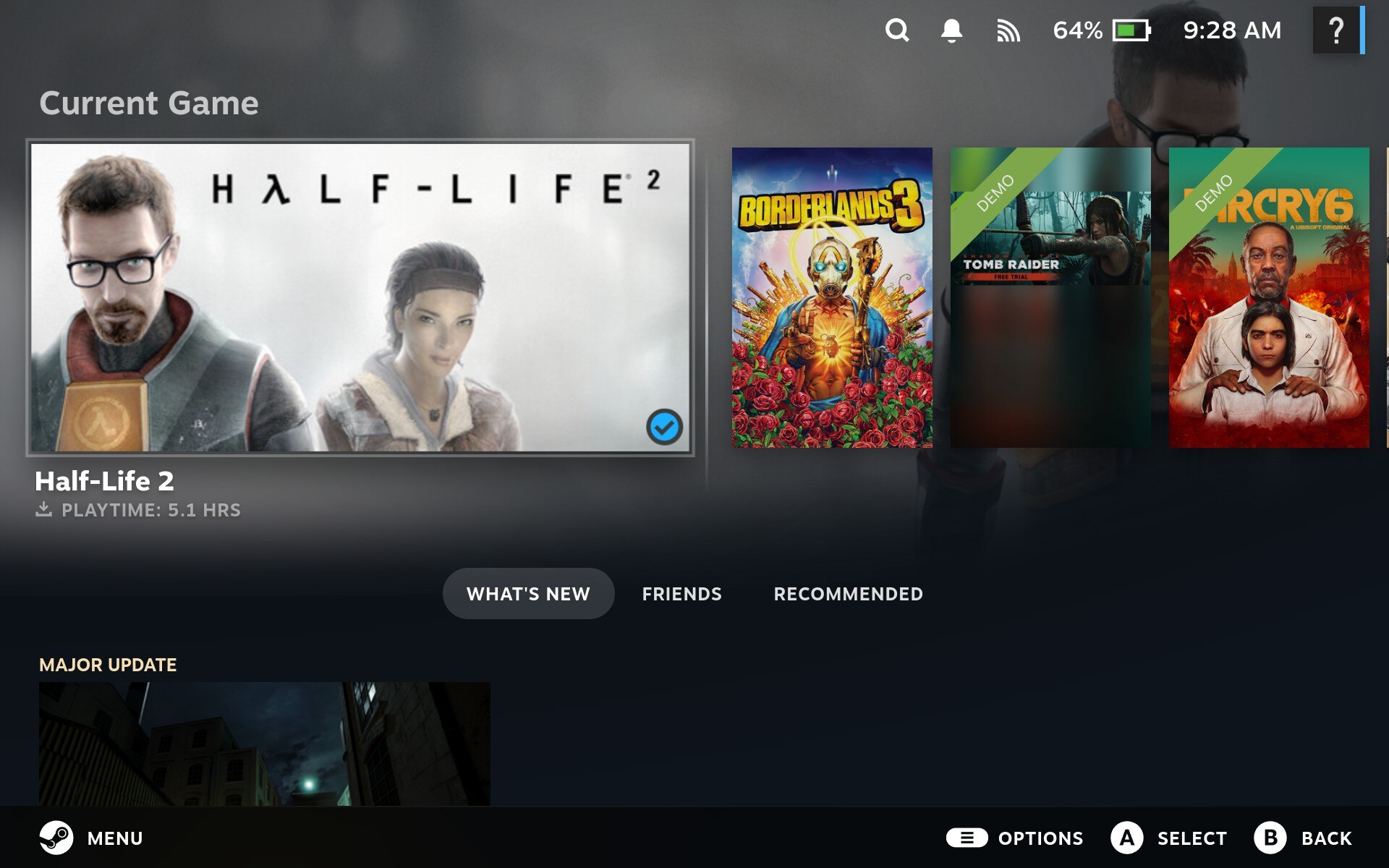
SteamOS, on the other hand, is easily navigated using your fingers. Buttons, menus, and UI elements are perfectly sized to respond appropriately to touch. From switching Steam profiles to changing Wi-Fi networks to configuring various system settings, it's painless. Of course, you can also just navigate using the physical controls and buttons if you prefer. Either way, the UI experience is light years ahead of Windows 11, and makes sense for an operating system that was designed first and foremost for gaming.
Games load faster, the UI is faster, and you still have access to the underlying Linux operating system. By pressing and holding the power button, you can bring up a menu that allows you to switch to Desktop mode. In this instance, you have access to the KDE Plasma desktop.
Display on the Legion Go S ( SteamOS)
The Legion Go S features an 8-inch, 1920 x 1200 IPS display with a maximum refresh rate of 120 Hz. Not surprisingly, our instrumented tests showed that our SteamOS-powered review unit didn’t stray too far from the results we obtained with our earlier Windows 11 sample.
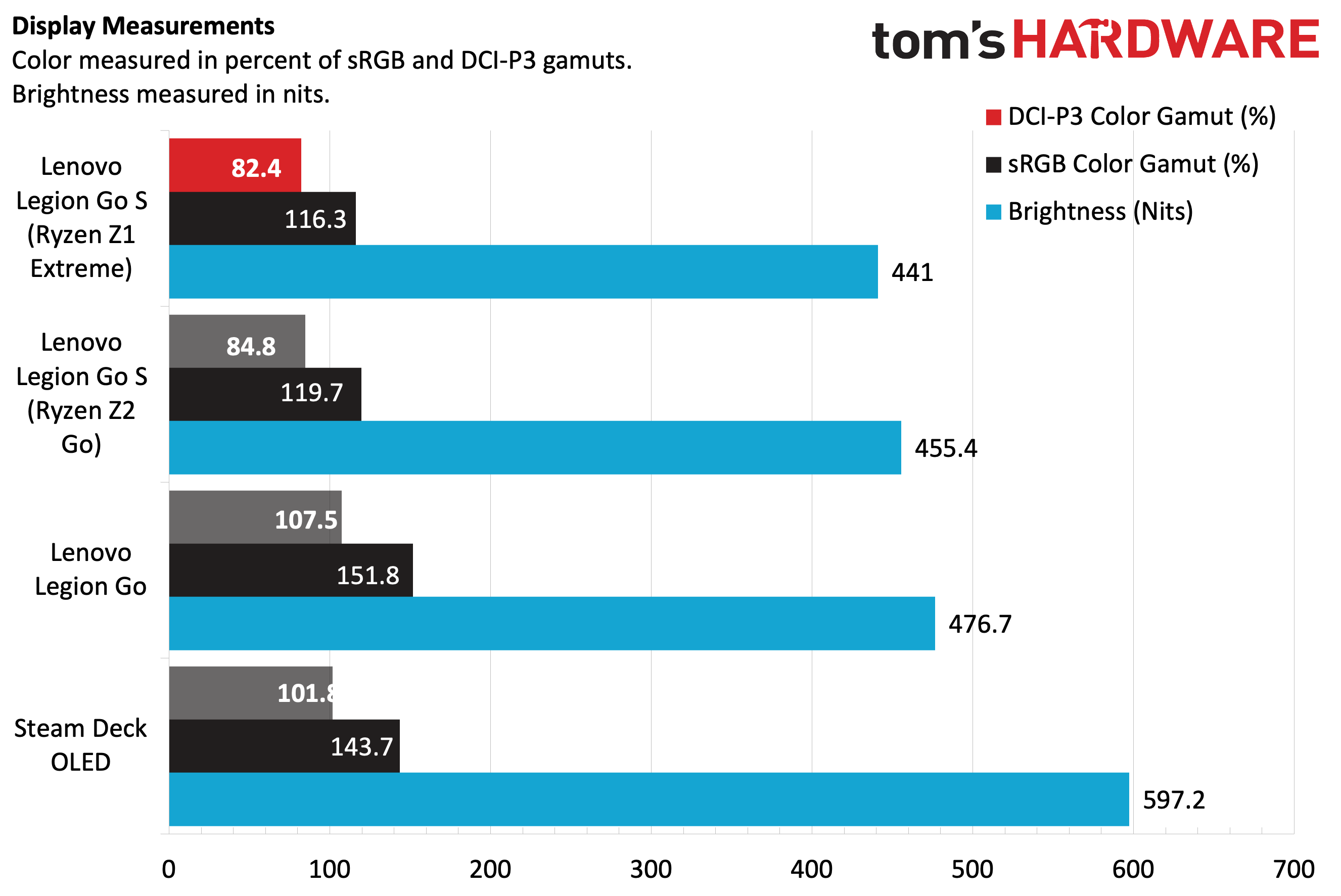
All numbers were within a few percentage points of each other, except for brightness. We measured 82.4 percent coverage of DCI-P3 and 116.3 percent of sRGB. The most significant discrepancy was with maximum brightness, which measured 441 nits compared to 455.4 nits in our earlier review unit.
Even at 50 percent brightness (my preferred setting for personal gaming sessions), the IPS display was sufficiently bright and colorful. For example, the sunlight reflecting off muddy water on horse trails in Red Dead Redemption 2 stood out, as did the neon glow and smoke-filled environments of Cyberpunk 2077.
Audio on the Legion Go S (Ryzen Z1 Extreme, SteamOS)
I played a variety of games on the Legion Go S, including Red Dead Redemption 2, BeamNG, and older classics like Half-Life 2. The quality of the speakers didn't bowl me over, but they worked well enough for gunfire and voices in Cyberpunk 2077, while engine sounds and gnarly crashes seemed realistic enough in BeamNG.
My biggest issue with the speakers is that the system fans often interfere with sound output. So, for the bulk of my gaming sessions, I used a pair of Bluetooth headphones. However, for the ultimate audio experience, I recommend opting for some of the best gaming headsets.
Upgradeability of the Legion Go S (Ryzen Z1 Extreme, SteamOS)
Just like the Windows 11 version of the Legion Go S, the SteamOS variant also features limited upgradeability. Accessing the inside requires removing three screws on the bottom edge of the device. You'll then need to remove the plastic panel that surrounds the power and volume buttons. From there, one more screw must be removed, and then there's the tricky process of taking off the triggers (which are held by two tiny screws). If you've managed to make it through this process without breaking any retaining clips, consider yourself lucky. But if you've made it this far, you can then remove the back panel, revealing the inside of the chassis.
The only hardware that's upgradeable is the internal storage. Although our review unit came with a 1TB SSD already installed, you can upgrade to a larger 2242 or 2280 SSD.
Heat on the Lenovo Legion Go S (Ryzen Z1 Extreme, SteamOS)
While the fans on the Legion Go S were always audible when playing games (particularly in Performance mode), they were definitely doing their job. The console never felt hot to the touch and remained comfortable through all of my gaming sessions. All of the hot air was forcefully ejected through the exhaust vents at the top of the console.
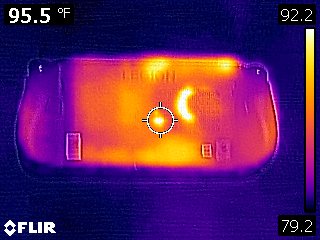
The hottest part of the console was at the back, just right of center. Here, I measured 91 degrees Fahrenheit. However, it's important to note that because of the way the hand grips are designed on the Legion Go S, you don't actually touch this hot spot.
Battery Life on the Lenovo Legion Go S (Ryzen Z1 Extreme, SteamOS)
The Legion Go S features a 55.5 WHr battery, so I wasn’t expecting any miracles regarding endurance. However, I routinely achieved over 2 hours of battery life while running games with 50 percent brightness and maximum details at 800p resolution in Performance mode. For example, I played Red Dead Redemption 2 story mode for 2 hours and 5 minutes before the console conked out, while BeamNG gave up after 2 hours and 30 minutes.
If I’m being honest, two hours is about my limit for gaming sessions anyway. Between the rigors of work and dad-life, it’s hard to steal time away for some leisurely playtime. However, if you want to extend your play sessions, just plug in the included 65-watt power adapter. Still, you want a battery that will last a flight or a train ride.
For comparison, the last Legion Go S that I tested with the slower Ryzen Z2 Go processor and Windows 11 wouldn’t last longer than about an hour and 45 minutes in Performance mode. Only when dialing back to the Power Saving profile could I muster just over two hours of runtime.
Legion Go S (Ryzen Z1 Extreme, SteamOS) Configurations
The Steam-powered Legion Go S with the Ryzen Z2 Go processor starts at $599. At that price, you get 16GB of LPDDR5x RAM and a 512GB SSD. However, our review unit came with the Ryzen Z1 Extreme, 32GB of LPDDR5x RAM, and a 1TB SSD, and it carries an eye-watering price tag of $829.
The Windows 11 version of the Legion Go S, featuring a Ryzen Z2 Go processor, 32GB of LPDDR5x RAM, and a 1TB SSD, is priced at $729.99.
Bottom Line
The last Legion Go S that I tested featured a Ryzen Z2 Go chip and ran Windows 11. While I praised its bright display and more ergonomic design over the original Legion Go, I lamented the pokey performance and poor value.
Our latest Legion Go S review unit, featuring the Ryzen Z1 Extreme and running SteamOS, most definitely addresses one of those concerns. Without a doubt, this machine ripped through our gaming benchmark suite and left all the other competitors in the dust. Not only does the Z1 Extreme offer higher performance levels (twice the number of CPU cores, a higher CPU boost clock, and a more stout GPU), but SteamOS also offers tangible performance benefits over Windows 11.
However, those performance benefits come with an even higher price tag. While the last Legion Go S (Windows 11) that we tested costs $729.99, our review unit stickers for $829.99. That’s a considerable sum of money for a gaming handheld. However, if there’s any consolation, the base SteamOS-powered Legion Go S with the Ryzen Z2 Go costs just $599. While you only get 16GB of RAM and a 512GB SSD, gaming performance should be similar or better than the more expensive Windows 11 version of the handheld.
There’s no doubt that with its hardware performance, the Legion Go S running SteamOS and the Ryzen Z1 Extreme is among the best PC gaming handhelds. However, if it were money, I’d opt for the $599 Legion Go S with SteamOS, and add my own 2TB SSD to boost internal storage for games.

 5 months ago
80
5 months ago
80
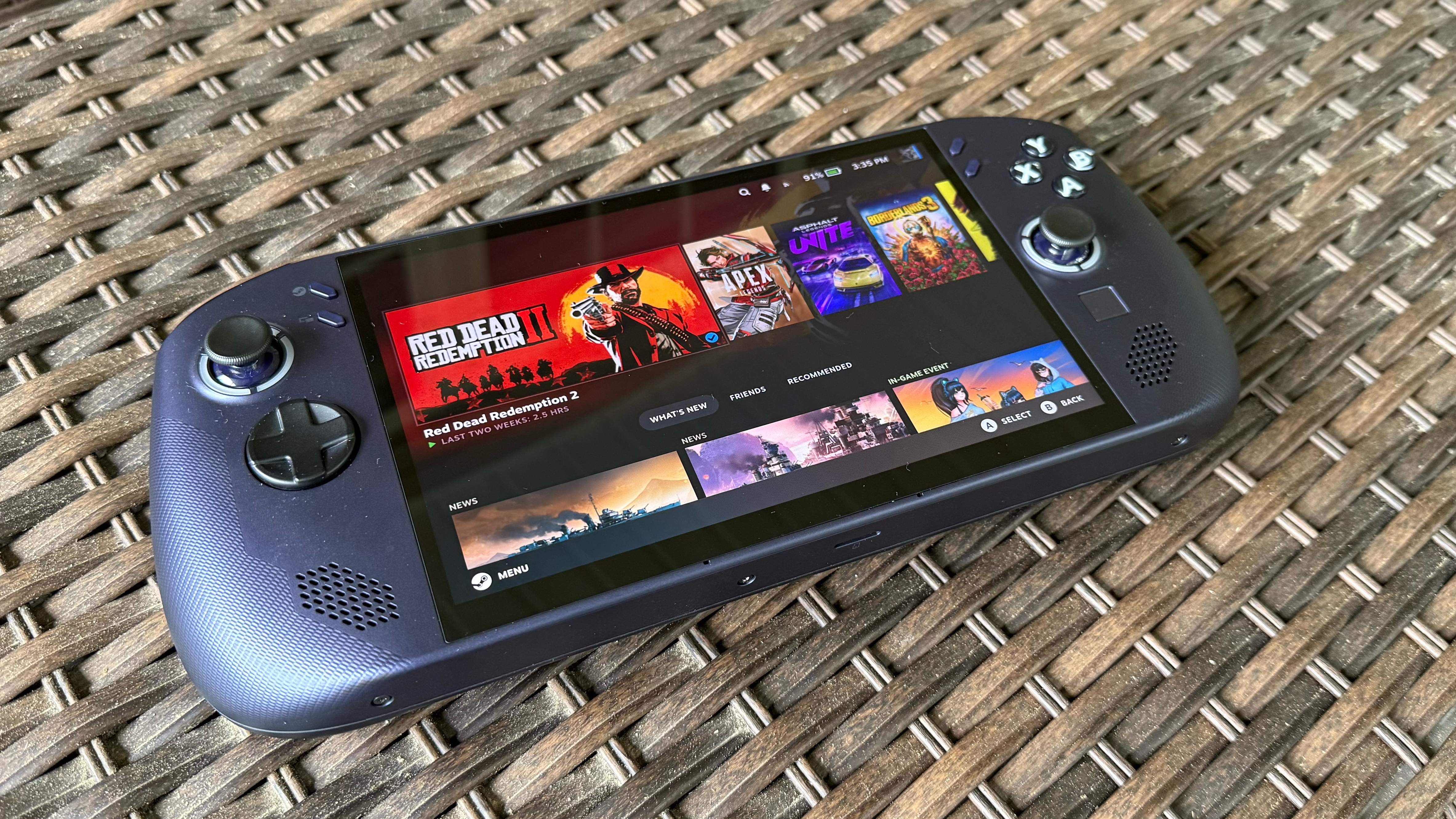
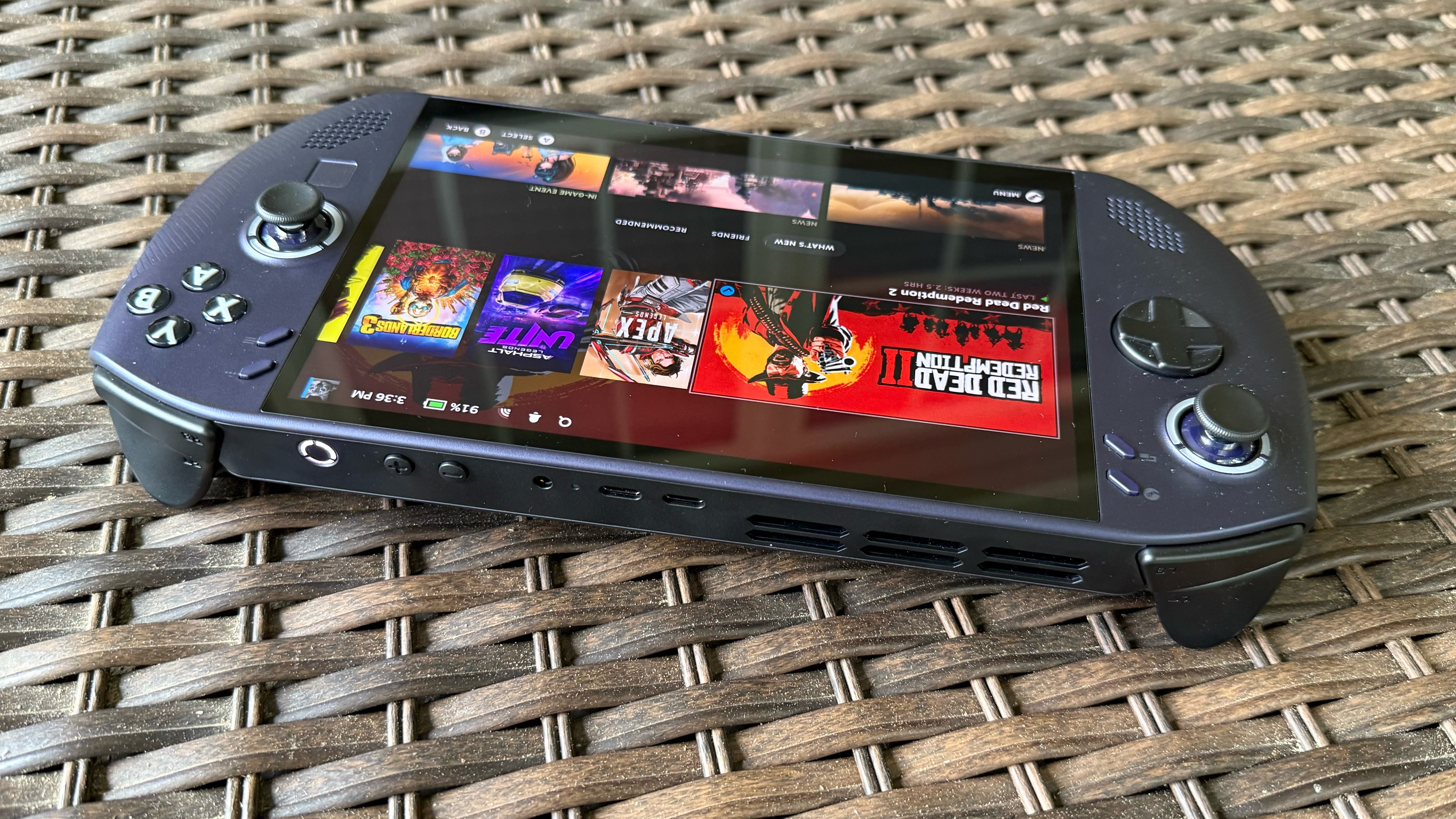
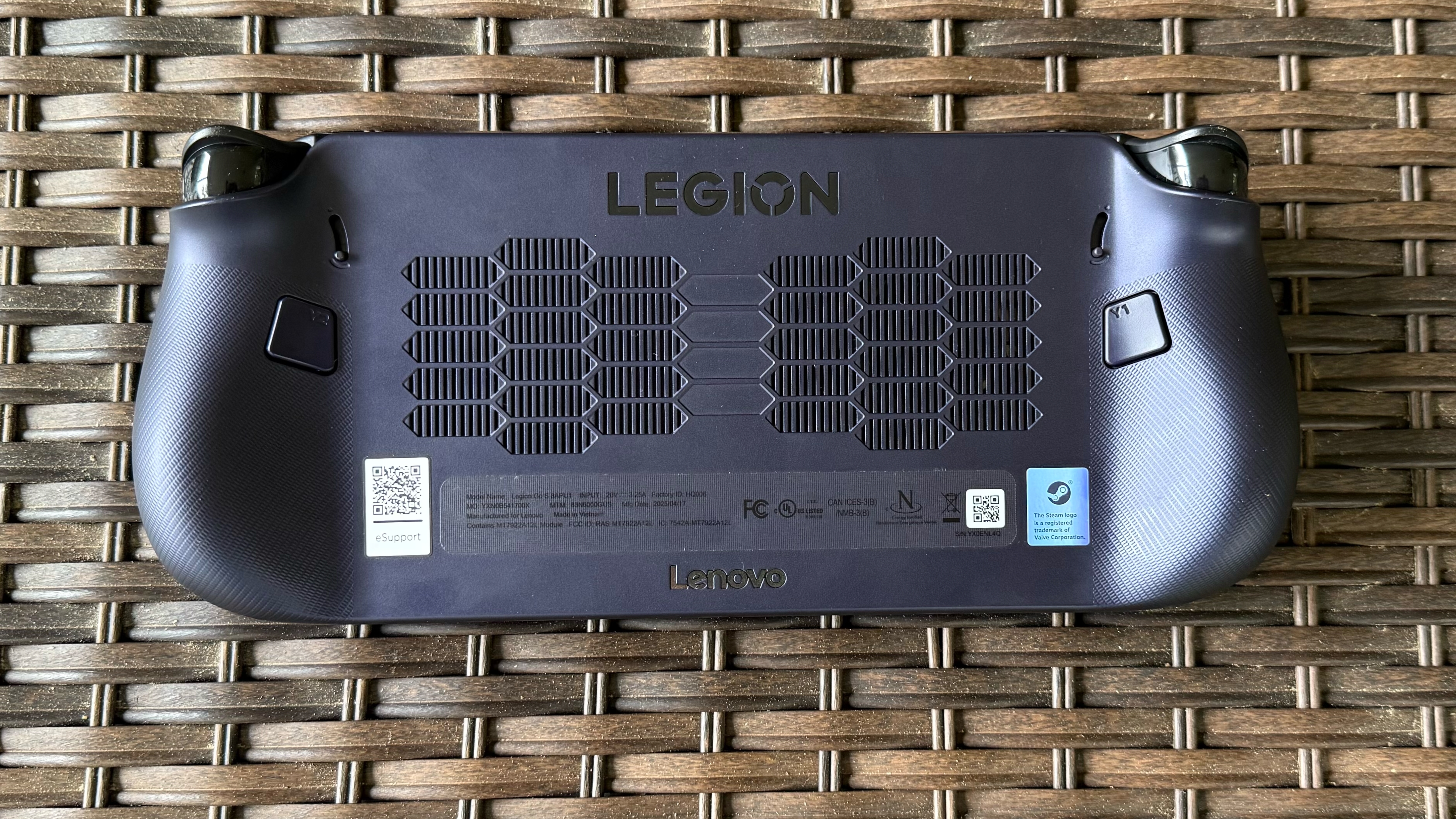
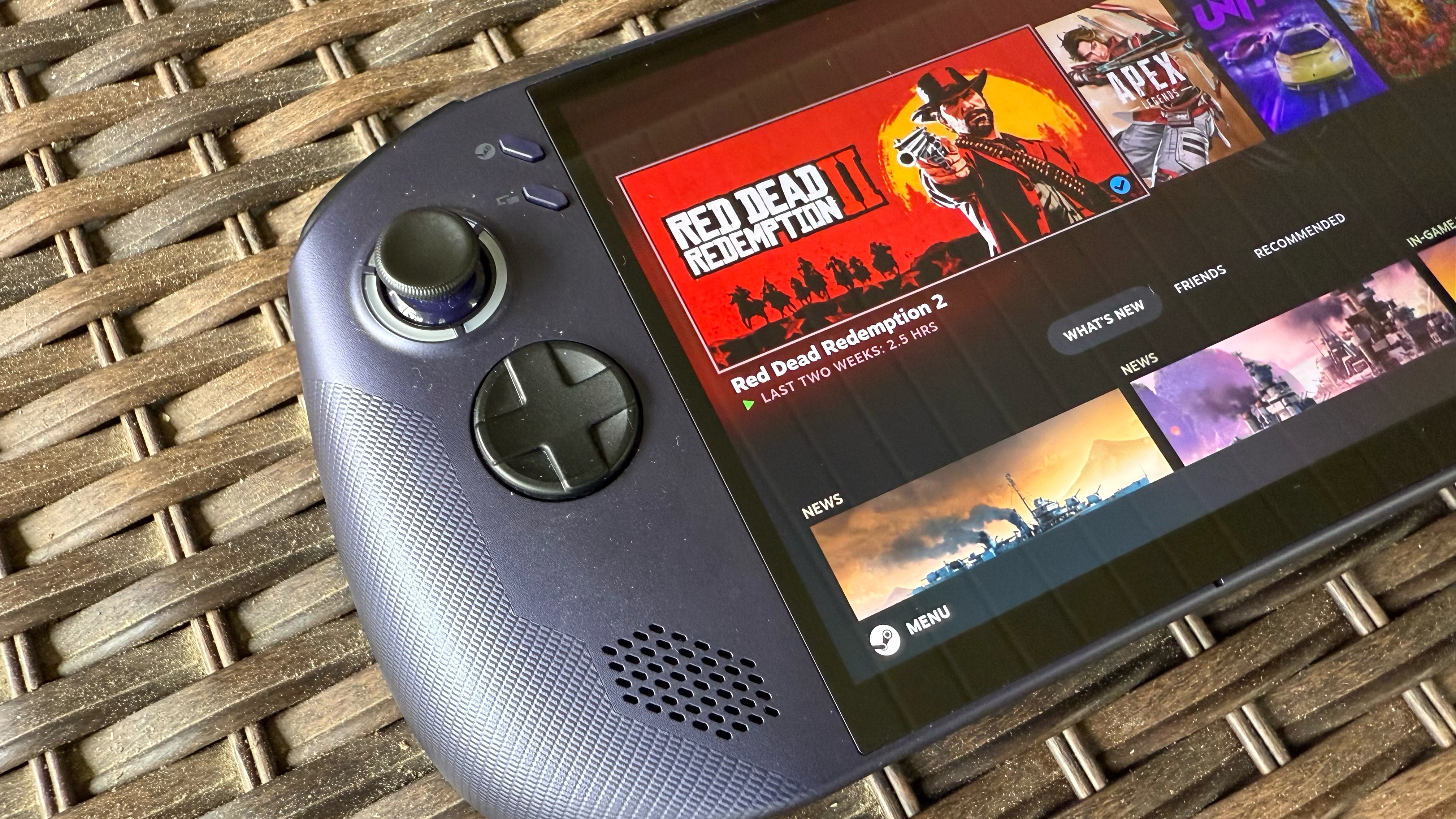
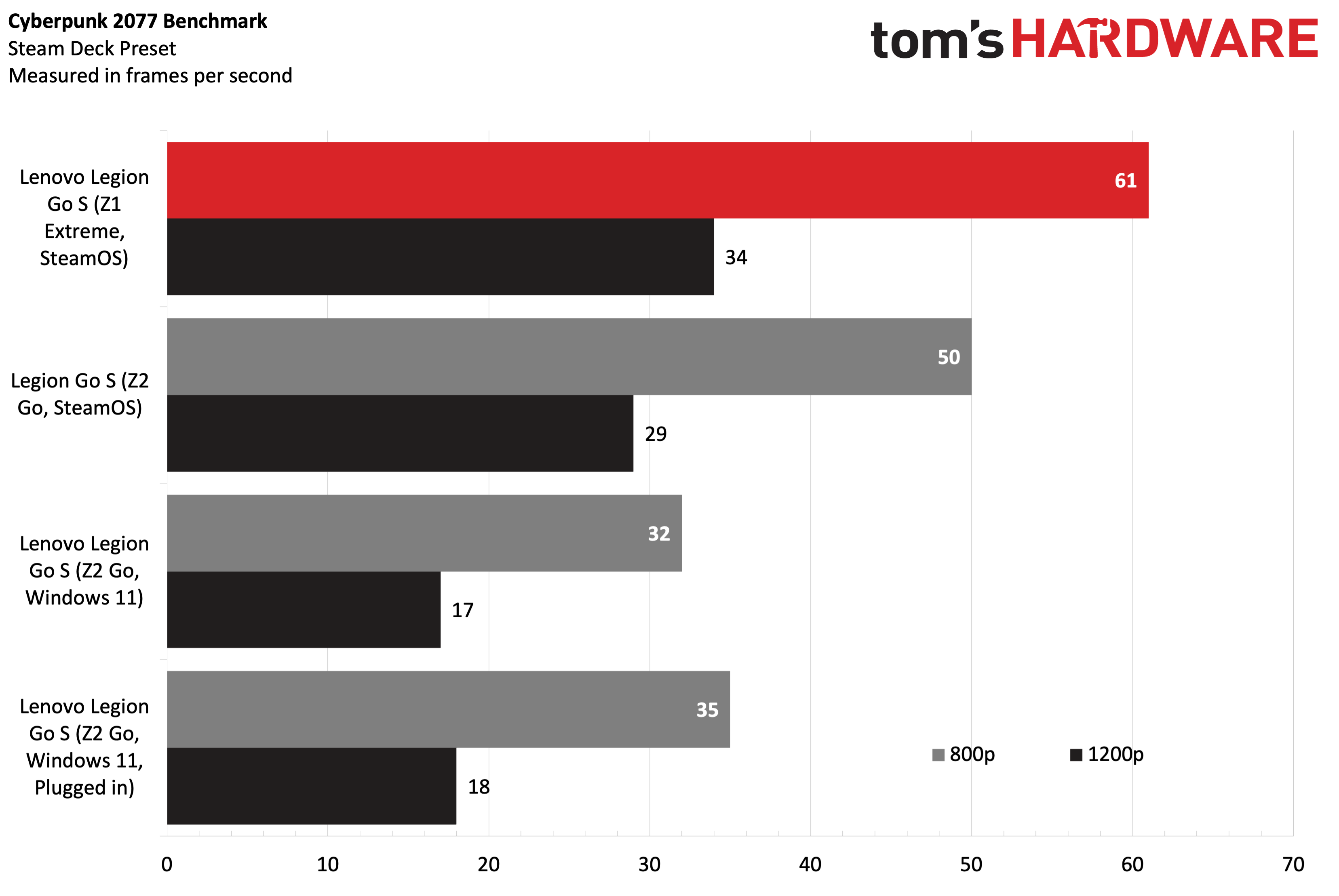
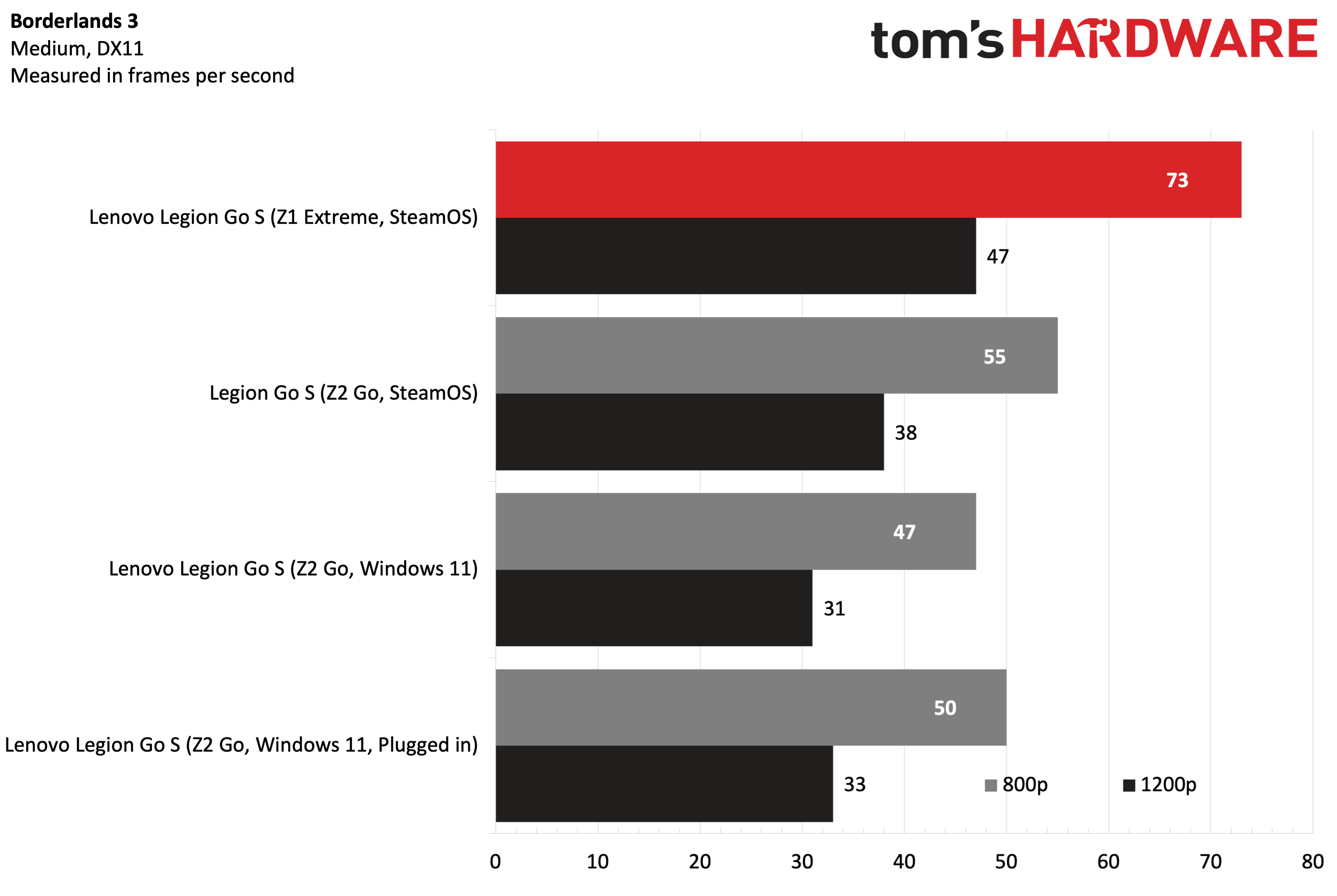



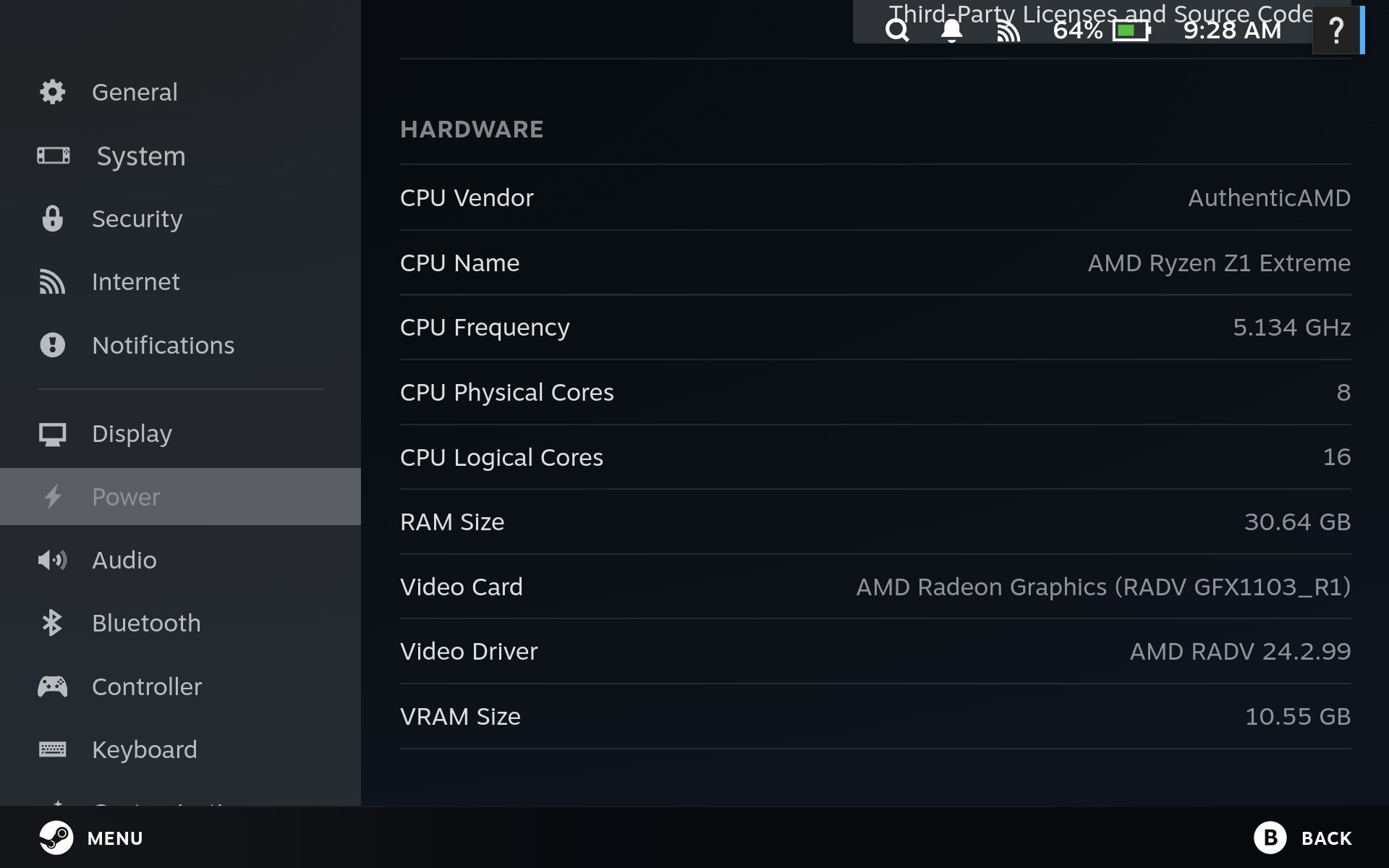

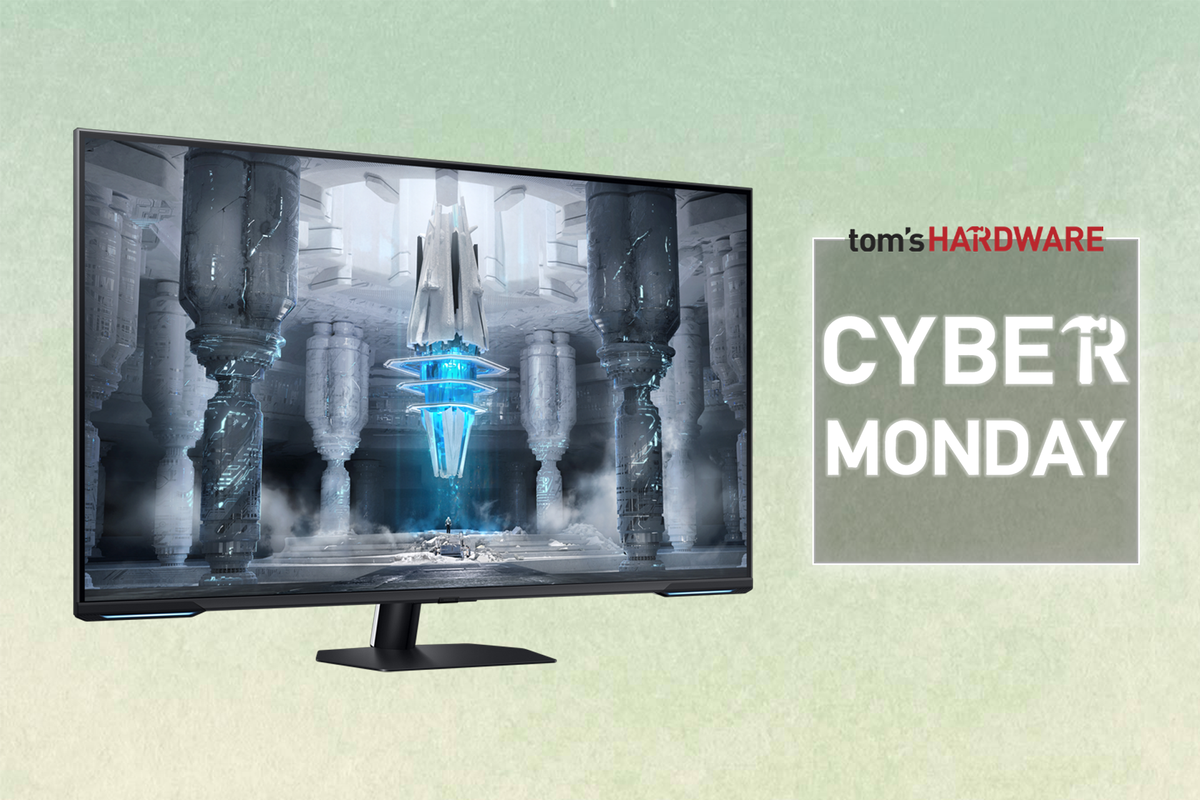



 English (US) ·
English (US) ·